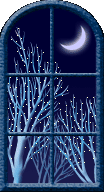
ADRIATIC SEA - An arm of the Mediterranean Sea between Italy and the Balkan Peninsula. It extends from the Gulf of Venice southward to the Strait of Otranto, which links it to the Ionian Sea. The Italian coast is relatively straight and continuous, having no islands, but the Croatian coast is full of islands, generally running parallel to the shore.
The northeast wind called
bora (Italian) or
bura (Croatian), and the prevalence of sudden squalls, are dangers to navigation in winter. The
bura is known for its "capriciousness" as well as sudden and often unexpected beginning. The gushes of wind can be accompanied by rumbling and exchange with calm or weak wind in periods of one or more minutes.
Also notable is the
scirocco/jugo (southern wind).It belongs to the group of spring-fall winds that are accompanied by rain and humidity, the
jugo does not blow often in the summer. When it does, you can recognize it by the following characteristics: the wind blows with a gradual increase without interruptions, creating very beautiful, long waves without noise and foam.
Maestral is a typical Adriatic summer northwestern wind and one of those winds that are characteristic for beautiful and stable weather. After the morning calm, almost always around noon during summer begins its pleasant circulation that can last, with increases, to dusk.
Nevera is a stormy wind on the sea, without constant direction, it is a passing and very strong wind.
Tramuntana (
;">Tramontana) - The name
tramontana comes from the Italian word 'tramonto' which means sunset. It is a northern thermal wind (usually it is a little bit colder) and blows in the evening when the weather is stable. The
Tramontana is also a wind that comes after rain or a storm and then it can be very dangerous and strong.
Many consider the Adriatic Sea the most beautiful in the world.

































